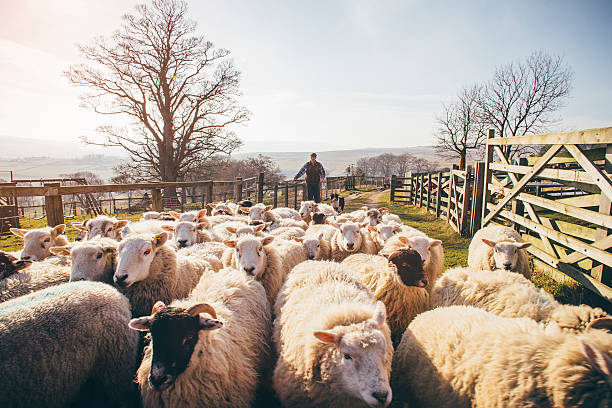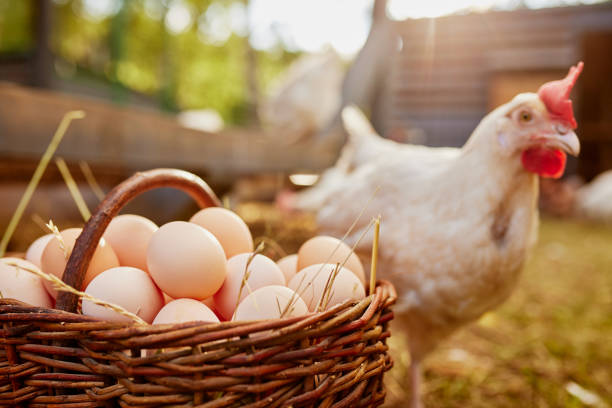Livestock farming, like any agricultural venture, comes with its fair share of uncertainties. These risks can have a significant impact on the profitability and sustainability of your investment. It’s crucial for investors to familiarise themselves with the various types of risks involved in this industry.
One of the primary risks in livestock farming is market volatility. The prices of livestock are subject to fluctuation due to a multitude of factors, including consumer demand, international trade dynamics, and seasonal variations. For instance, a sudden surge in demand for a specific type of meat could lead to a spike in prices, but this trend can reverse just as quickly. Investors need to be prepared for these shifts and have strategies in place to mitigate their impact on returns.
Supply and demand dynamics also play a crucial role in market risks. An oversupply of a particular livestock category can lead to a drop in prices, affecting revenue. Conversely, unexpected spikes in demand may strain the supply chain, potentially leading to increased costs.
Production Risks
The health and well-being of your livestock are paramount to the success of your farm. However, this aspect comes with its own set of risks. Disease outbreaks can quickly spread among livestock populations, leading to significant losses. Climate-related challenges, such as droughts or extreme temperatures, can affect the availability of feed and water, potentially impacting the growth and development of your animals.
Investors must have a solid understanding of these production risks and implement measures to safeguard the health and welfare of their livestock. This may involve implementing strict biosecurity protocols, investing in climate-resilient infrastructure, and having contingency plans in place to address any health emergencies.
Regulatory Risks
The agricultural industry is subject to a wide array of regulations, which can vary from region to region. Changes in government policies, environmental regulations, or animal welfare standards can have a direct impact on your farming operations. It’s crucial for investors to stay informed about these regulatory shifts and be prepared to adapt their strategies accordingly.
Compliance requirements for livestock farming operations may involve additional costs and administrative burdens. This includes adhering to zoning regulations, waste management standards, and obtaining necessary permits. Failing to meet these regulatory obligations can lead to legal issues and financial penalties.
In the next section, we’ll delve into strategies for effectively assessing and evaluating these risks, providing investors with the tools they need to make informed decisions in their livestock farming endeavours.
Risk Assessment and Evaluation
Having a clear understanding of the risks associated with livestock farming is the first step towards effective risk management. This involves a thorough evaluation of various factors that can impact your farm’s performance.
Market Analysis
Conducting a comprehensive market analysis is crucial for identifying potential risks and opportunities in the livestock industry. This entails researching market trends, consumer preferences, and competitive dynamics. By staying attuned to market signals, investors can make informed decisions about when to buy, sell, or adjust their livestock holdings.
For example, if there’s a growing trend towards organic and sustainably raised livestock, this information can guide your investment choices. Similarly, understanding the preferences of your target market, whether it’s local consumers or larger distributors, can influence your choice of livestock species and production methods.
Production Analysis
Evaluating the health and condition of your livestock is fundamental to risk assessment. Regular health checks, monitoring growth rates, and observing behavioural patterns can provide valuable insights into the well-being of your animals. Additionally, understanding the environmental factors that may affect production is key. For instance, if you’re operating in an area prone to certain diseases, implementing preventive measures becomes imperative.
Moreover, climate-related challenges can have a significant impact on production. Droughts, floods, or extreme temperatures can disrupt feed supply chains and hinder the growth of livestock. By assessing these potential challenges, investors can put in place measures to mitigate their effects.
Accurate and up-to-date data is essential for effective risk assessment. Implementing technology solutions, such as IoT devices for livestock monitoring, can provide real-time insights into the health and performance of your animals.
Risk Mitigation Strategies
Once you’ve identified and assessed the risks associated with livestock farming, it’s time to implement strategies to mitigate them. Here are some effective risk management approaches for investors in this industry:
Diversification
Diversifying your livestock holdings can be a powerful strategy for spreading risk. Instead of focusing solely on one type of livestock, consider investing in a mix of species or even exploring ancillary activities related to livestock farming. For example, alongside traditional livestock like cattle or poultry, you might venture into niche markets like organic or specialty meats. Additionally, offering services such as animal husbandry or processing can provide additional revenue streams.
By diversifying, you reduce your exposure to market fluctuations specific to a single livestock category. This strategy can help stabilise your returns and provide a buffer against unexpected events.
Insurance and Hedging
Insurance can be a crucial tool for mitigating various risks in livestock farming. Livestock mortality insurance, for instance, can protect against losses due to disease outbreaks or accidents. Additionally, liability insurance can cover legal expenses in case of unforeseen incidents involving your livestock.
Hedging is another technique that allows you to lock in prices for your livestock. This involves using futures contracts or other financial instruments to protect against adverse price movements. While it may require a certain level of financial sophistication, hedging can provide a degree of price stability in volatile markets.
Biosecurity Measures
Protecting the health of your livestock is paramount. Implementing strict biosecurity protocols can help prevent the spread of diseases within your farm. This includes measures such as controlled access to the farm, regular health checks, and quarantine procedures for new arrivals.
Vaccination programs are also a critical component of biosecurity. By ensuring your livestock are immunised against common diseases, you reduce the risk of outbreaks that could devastate your herd.
These risk mitigation strategies work best when integrated into a comprehensive risk management plan. Combining diversification, insurance, hedging, and biosecurity measures provides a robust framework for safeguarding your livestock farming investment.
Financial Planning for Risk Management
Effectively managing the financial aspects of your livestock farming venture is essential for long-term success. This involves careful budgeting, financial forecasting, and maintaining emergency funds.
Budgeting and Financial Forecasting
Creating a realistic budget is a foundational step in risk management. It allows you to plan for necessary expenses, allocate resources efficiently, and anticipate potential challenges. Your budget should encompass all aspects of your livestock farming operation, including feed, veterinary care, infrastructure maintenance, and administrative costs.
Furthermore, financial forecasting helps you anticipate future revenue and expenses. This involves making educated estimates based on historical data, market trends, and other relevant factors. By having a clear financial roadmap, you can identify potential financial risks and take proactive measures to address them.
Emergency Funds
Establishing and maintaining an emergency fund is crucial for dealing with unforeseen events. Whether it’s a sudden outbreak of disease, a natural disaster, or a significant market downturn, having readily available funds can mean the difference between weathering the storm and facing financial hardship.
Your emergency fund should be sufficient to cover essential expenses, including feed, veterinary care, and other critical costs, for a specified period of time. This provides a financial safety net during challenging times.
By incorporating these financial planning strategies into your risk management approach, you’re better prepared to handle unexpected situations and ensure the continued viability of your livestock farming operation.
Monitoring and Adaptation

Once you’ve implemented your risk management strategies, it’s crucial to maintain a vigilant eye on your livestock farming operation. Regular monitoring and adaptation are key to ensuring the continued success of your investment.
Regular Assessments
Risk factors in livestock farming can change over time due to various factors, including market trends, climate conditions, and evolving regulatory landscapes. Therefore, it’s important to implement a system for regular risk assessments. This involves evaluating the effectiveness of your existing risk management strategies and identifying any new or emerging risks.
For instance, if there’s a sudden increase in reports of a particular disease in your region, it may be necessary to revisit and strengthen your biosecurity measures. Likewise, shifts in consumer preferences or market demands may necessitate adjustments to your livestock mix or production methods.
Staying Informed
Staying abreast of industry news and developments is essential for effective risk management. Keep a watchful eye on agricultural publications, attend industry conferences, and engage with fellow livestock farmers. Networking with other professionals in the field can provide valuable insights and early warnings about potential risks or opportunities.
Furthermore, staying informed about technological advancements can also enhance your risk management efforts. New technologies, such as improved monitoring systems or disease detection tools, can provide valuable support in safeguarding your livestock and mitigating risks.
By maintaining a proactive stance and staying informed, you’re better equipped to adapt to changing circumstances and continue to thrive in the livestock farming industry.
Conclusion
In the dynamic world of livestock farming, understanding and managing risks is paramount to success. By comprehensively assessing and evaluating market, production, and regulatory risks, investors can make informed decisions that safeguard their investments.
Implementing effective risk mitigation strategies, such as diversification, insurance, hedging, and biosecurity measures, forms a robust framework for protecting your livestock and optimising returns.
Financial planning, including budgeting, financial forecasting, and maintaining emergency funds, provides the necessary financial stability to weather unforeseen challenges.
Regular monitoring and adaptation ensure that your risk management strategies remain relevant in the face of evolving market conditions, regulatory changes, and emerging risks.
Through diligent attention to risk management, livestock investors not only protect their investments but also position themselves for long-term success in the dynamic and rewarding field of livestock farming.
Remember, successful livestock farming is a blend of knowledge, experience, and the ability to adapt to changing circumstances. With effective risk management, you’re not just investing in livestock, but in a sustainable and prosperous future.












